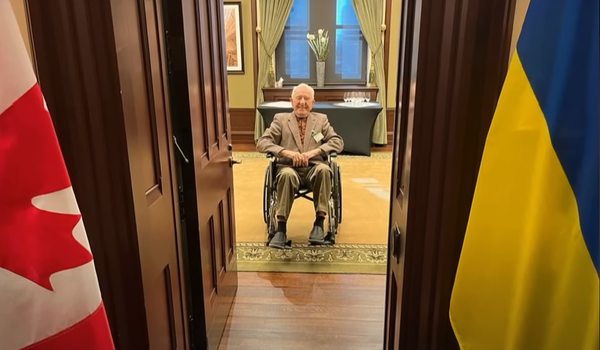In an election widely seen as being distinguished by a near total lack of substantive policy debates, it may surprise some Canadians to know that, on the issue of combatting poverty among seniors, Canada’s five major parties seem to have taken the matter seriously and put forward original solutions to help redress the largely hidden problem.
While poverty among Canadian seniors fell precipitously during the latter decades of the 20th century — leading some analysts to call it one of Canada’s greatest policy achievements — the poverty rate rose steadily between the mid-1990s and late 2000s.
According to Statistics Canada, 238,000 Canadian seniors were living in poverty in 2017, and that number rose to nearly 350,000 in 2019 (and is likely higher as a result of the pandemic).
Poverty among the elderly disproportionately affects single seniors: while 2.8 per cent of seniors living in families live at or below the poverty line, that figure rises to nearly 12 per cent of single seniors.
It’s further estimated that roughly two-thirds of poor seniors are women, and that a higher portion of poor seniors live in long-term care (LTC) facilities of the kind that were ravaged by the first wave of the COVID-19 pandemic.
As is the case with poverty in the general population, elderly poverty in Canada increases with seemingly every additional variation from the statistical-demographic mean (i.e. a heteronormative white couple).
And although elderly poverty in Canada is relatively low when compared with other developed nations (and about half the rate of poverty in the general population), it remains a stubbornly persistent problem. The issue is a growing concern for the most faithful and consistent of voters, and a jarring demonstration of the gaps in Canada’s social safety net.
Left-Leaning Parties' Plans To Address Poverty Better Developed, Advocate Says
CanAge, a national and non-partisan seniors’ advocacy organization, has ranked the major federal parties in terms of how they’ll address issues of particular concern to senior citizens.
“While all the parties have some well-developed ideas concerning senior citizens, and are aware of the issues that are affecting their lives, what we’ve noticed is that the specific policy ideas concerning elderly poverty are better developed the further you move to the left of the political spectrum,” said Laura Tamblyn Watts, CanAge’s CEO.
Tamblyn Watts highlights that the NDP is the only party that proposes making automatic enrolment in OAS and GIS retroactive, something she believes would go a long way to alleviating elderly poverty.
“The Liberals’ decision to adopt automatic enrolment was a move in the right direction,” she added. “The NDP’s plan to make this retroactive is the logical next step.”
The NDP and Greens are the only parties proposing a guaranteed liveable income for seniors. The Conservatives, Greens and NDP also have specific economic security policy points that focus on protecting seniors’ pensions.
While the Liberals have promised increases to OAS and GIS for seniors aged over 75, the economic security component of their seniors’ specific platform is less well developed than other areas, such as improvements and additional funding to long-term care facilities.
For their part, the Conservatives have prioritized ensuring clear reporting of pensions and preventing the conversion of underfunded pensions into annuities (which can result in workers eating pension losses they’re not responsible for). Perhaps the most innovative and frustrating Tory position is to use surplus military housing to prevent veterans from becoming unhoused — although this would make good use of unused resources, it doesn’t address the broader housing problem affecting poor seniors.
While some analysts point out that Canada is in the midst of the greatest ever intergenerational transfer of wealth, the stereotype of the wealthy property-owning boomer belies the starker realities of low-income seniors, often single women, who own their homes (or are nearly finished paying their mortgages), but are otherwise living with scant resources and are reluctant to sell their primary assets. These are some of the hidden poor among Canada’s elderly.
Others who tend to fall through the cracks are elderly immigrants, who are vulnerable to exploitation and among the least likely to find gainful employment.
The Bloc Québécois, cognizant that an ever-growing number of seniors need to work to make ends meet, proposes capitalizing on seniors’ work experience by enabling poor seniors to work more without penalty. It’s a pragmatic solution, but also one that tacitly accepts defeat for the social safety net that once ensured comfort in retirement.
Seniors' Entrepreneurship Overlooked
One area highlighted by Tamblyn Watts as not getting enough attention by the major parties or media is entrepreneurship by seniors, which she argues gets essentially no support from most governments, as most support for small businesses tends to focus on tech start-ups. For elderly Canadians seeking to commit a lifelong talent for baking or gardening into viable small businesses, support is virtually non-existent.
Tamblyn Watts thinks this is an unfortunate oversight that merits correction: “Senior entrepreneurship is on the rise in Canada, but they get no support,” she said. “We almost never discuss it, and yet they tend to be successful, conservatively-run, focused on their immediate communities and hire plenty of young people.”
That Canada’s leading parties have all zeroed-in on the vulnerability of LTC residents as a problem requiring immediate attention is mildly reassuring to many.
In addition to proposing $9 billion in spending on LTC facilities, the Liberals pledge additional funding to raise the standard of care in facilities across the country, as well as introducing new federal legislation intended to ensure a higher standard of care. They also propose training new LTC workers and raising their pay.
The Conservatives propose establishing national best practices for LTC facilities, and prioritizing immigrants for work in that sector. They also propose $3 billion to renovate LTC facilities.
The NDP proposes similar ideas but also wants to build half a million new affordable housing units, some of which could accommodate multi-generational families. They further propose increasing the Health Transfer, but most significantly advocate eliminating for-profit LTC facilities within a decade, beginning with the nationalization of Rivera, a private LTC operator.
Despite these pledges, however, the steadily growing number of Canadian seniors living in poverty is a reminder that this country’s self-assurance in the strength of its social safety net is a confidence born of self-delusion.
Canada greatly reduced elderly poverty in the latter decades of the 20th century, but more than two-decades of governments assuming the private sector is best-positioned to handle the evolutions of our society have reversed some significant gains.
Taylor C. Noakes is an independent journalist and public historian from Montreal.








Member discussion